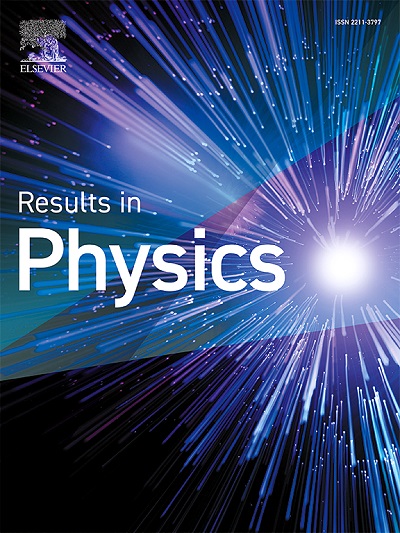Laser-induced photochemical reduction for the production of gold and silver nanoparticles on gold nanostructures
IF 4.4
2区 物理与天体物理
Q2 MATERIALS SCIENCE, MULTIDISCIPLINARY
引用次数: 0
Abstract
This research explores two methods for the photo-chemical reduction of gold and silver ions, utilizing either a continuous-wave (CW) laser or a femtosecond laser, in conjunction with plasmon-assisted hot electrons. The study focuses on the photoreduction of chloroauric acid (HAuCl4) and silver nitrate (AgNO3) solutions containing gold nanostructures under irradiation from either CW or femtosecond laser. Specifically, we employed a 445 nm CW laser to irradiate gold nanowires, formed through the photo-driven self-assembly of gold nanorods, in HAuCl4 solution. Through this photoreduction process, we observed the newly formed gold nanoparticles on the surface of gold nanowires. In addition, we also used 445 nm to irradiate gold triangular nanoplates in AgNO3 solution with ascorbic acid as a reducing agent. We observed that silver nanoparticles clearly formed and attached to the edges of a gold triangular nanoplate. In another approach, an 800 nm femtosecond laser was used to irradiate gold nanorods, gold triangular/hexagonal nanoplates and a gold nanofilm in AgNO3 solution with a reducing agent under inverted microscopy. For instance, silver nanoparticles were observed to attach to the edges of the gold triangular and hexagonal nanoplates, facilitating the growth of the nanoplates. The formation of photochemically reduced nanoparticles was confirmed using energy-dispersive X-ray spectroscopy. Notably, 3D silver dendritic structures were synthesized with the femtosecond laser and deposited onto the gold nanofilm, a process attributed to two-photon absorption effect. The high sensitivity of these immobilized dendrites for surface-enhanced Raman scattering applications was also demonstrated.
求助全文
约1分钟内获得全文
求助全文
来源期刊

Results in Physics
MATERIALS SCIENCE, MULTIDISCIPLINARYPHYSIC-PHYSICS, MULTIDISCIPLINARY
CiteScore
8.70
自引率
9.40%
发文量
754
审稿时长
50 days
期刊介绍:
Results in Physics is an open access journal offering authors the opportunity to publish in all fundamental and interdisciplinary areas of physics, materials science, and applied physics. Papers of a theoretical, computational, and experimental nature are all welcome. Results in Physics accepts papers that are scientifically sound, technically correct and provide valuable new knowledge to the physics community. Topics such as three-dimensional flow and magnetohydrodynamics are not within the scope of Results in Physics.
Results in Physics welcomes three types of papers:
1. Full research papers
2. Microarticles: very short papers, no longer than two pages. They may consist of a single, but well-described piece of information, such as:
- Data and/or a plot plus a description
- Description of a new method or instrumentation
- Negative results
- Concept or design study
3. Letters to the Editor: Letters discussing a recent article published in Results in Physics are welcome. These are objective, constructive, or educational critiques of papers published in Results in Physics. Accepted letters will be sent to the author of the original paper for a response. Each letter and response is published together. Letters should be received within 8 weeks of the article''s publication. They should not exceed 750 words of text and 10 references.
 求助内容:
求助内容: 应助结果提醒方式:
应助结果提醒方式:


